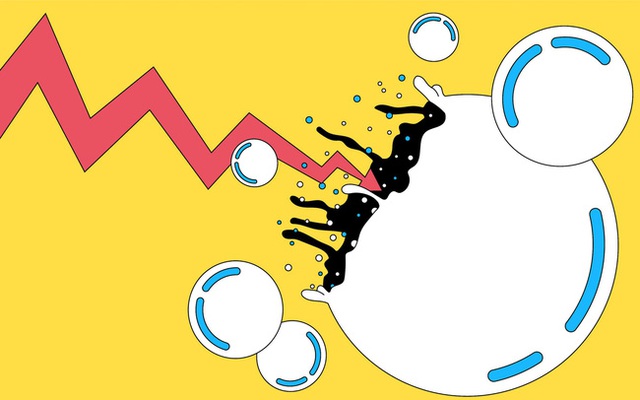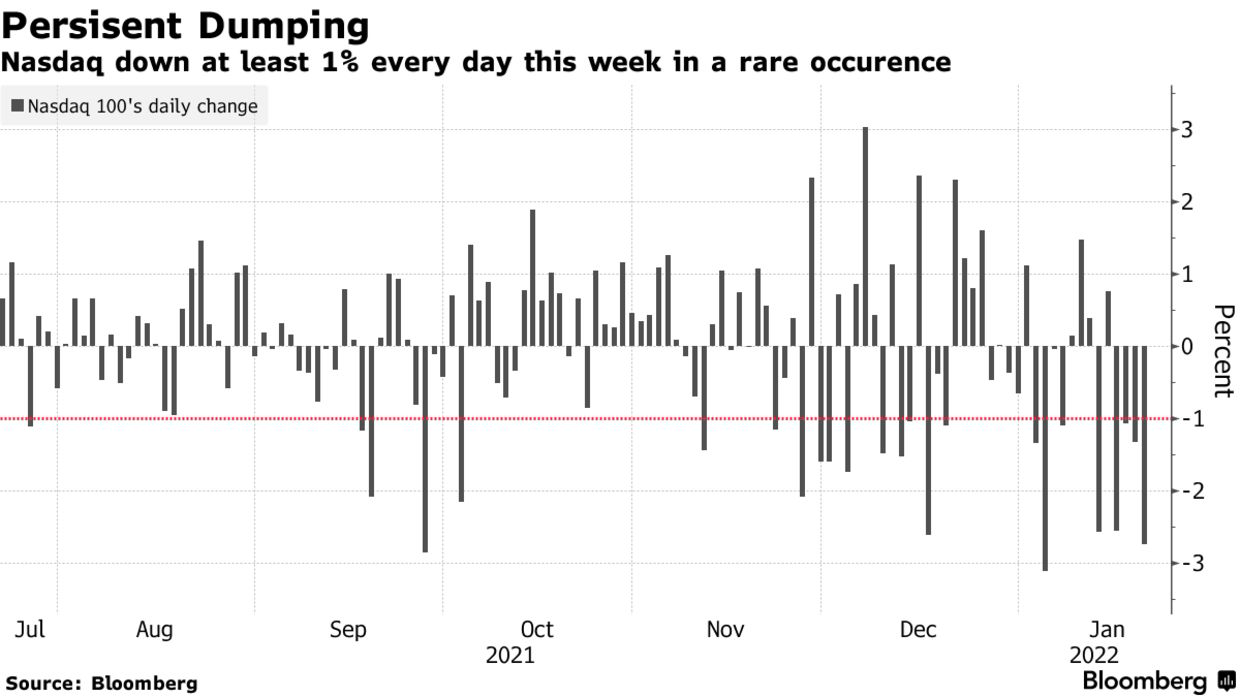Bloomberg: Lots of signs that the disaster of the dot-com bubble burst is about to happen again
- Tram Ho
Wall Street bulls should be happy because US stocks only trade for 4 days instead of 5 days as usual.
The Nasdaq 100 just posted a performance not seen since the post-internet bubble: the index fell more than 1% in each session this past week (but markets were closed for a holiday Monday). However, for the group of investors “stuck” in the sell-off, something seems to have changed.

The technology index saw a week in the red, the first time since the dot-com bubble burst in April 2000 and then September 2001. At that time, Nasdaq continued to drop another 28% before the market bottomed about a year later.
George Peakers – strategist at Bespoke Investment Group, commented: “Not counting the market crash right after 9/11, the plunge that followed was the bursting of the tech bubble. This is certain. It’s an ominous situation.”
The Nasdaq 100 has fallen 7.5% over the past week as a sharp sell-off in speculative asset classes “spread” to the rest of the market. Disappointing business results from the likes of Netflix have shown that when the economy recovers, the growth advantage of the technology sector will disappear. With the current context, the downward trend with this group of stocks will continue.

Nasdaq 100 volatility in each session.
Losing nearly 12% in January, the Nasdaq 100 is set to record its worst month since the 2008 global financial crisis. In a four-day streak of trading, the index fell 1% in a row for the first time in each session. since 2018.
Chris Murphy, co-head of derivatives strategy at Susquehanna International Group, said: “The sell-off in the final hours of trading and the steady pace of selling every day shows that institutional investors are running out of patience. ring and hastily withdraw the money.”
Investors seem to be “paying the price” for a short-term hedging strategy. The CBOE NDX Volatility Index, a Nasdaq-linked options price index, rose eight points in four days to 34.06, its highest level since March of last year.
According to Bloomberg, it is difficult to say whether this is the beginning of the bottoming process or something worse. In Bank of America’s latest survey of global fund managers, the allocation to the technology sector fell to its lowest level since 2008.
“If this sell-off persists, you should wonder how much more things fall,” said Pearkes. On the other hand, this negative move is what the ‘bears’ are looking for. for a sign that investor sentiment has become more real.”
Source : Genk
